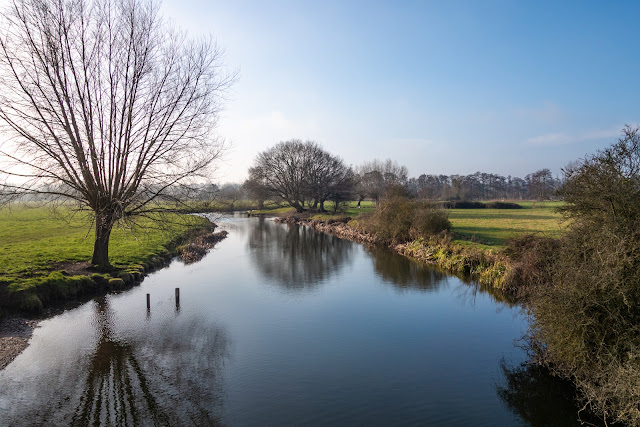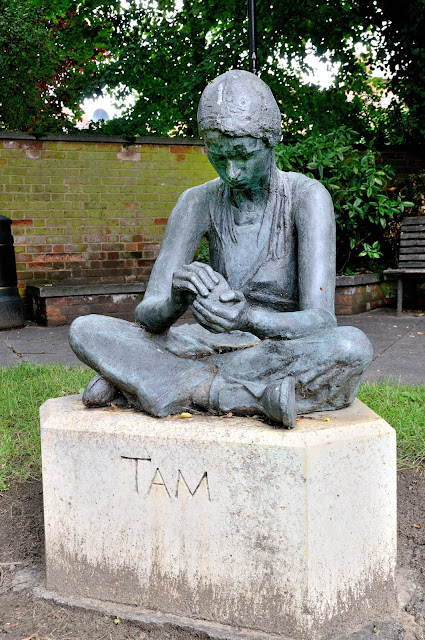Owain Glyndŵr was probably born in the 1350s (the plinth gives 1349). The young Owain was a typical nobleman, his etiquette honed at the Inns of Court in London.
He had homes in Carrog, near Corwen, and Sycharth in Powys (near Oswestry). He fought with the English against the Scots and Dutch before King Richard II was abducted in Colwyn Bay in 1399 and dethroned by supporters of Henry Bolingbroke, who then became Henry IV.
It’s unclear whether the change of monarch affected the outlook of middle-aged Glyndŵr. At around this time he began to argue with a neighbour, Baron Reginald Grey of Ruthin. In September 1400 he attacked Ruthin, and followed up with raids on other local boroughs. This quickly escalated into full-scale rebellion, as Welsh people saw a chance to hit back at English settlers and the privileges they received
The rebellion received military aid from France and powerful English allies. In 1404, envoys from overseas and Scotland watched his coronation as Prince of Wales, at a parliament held in Machynlleth.
With most of Wales under his control, in 1405 Glyndŵr and his allies drew up an agreement to overthrow the king and divide the country in three, with a considerable chunk of England added to Wales. However, French support dwindled, the rebels lost ground in Wales and in 1409 the English recaptured Harlech Castle – which had been Glyndŵr’s stronghold.
Glyndŵr was never captured, and it’s presumed that he died in hiding c.1415.
This life-size bronze statue of Owain Glyndŵr on his horse was installed in the square at Corwen in 2007. It stands on an eight-ton plinth of polished granite.
Commissioned as a workhouse in 1837, and originally housing 150 paupers. The building was partly remodelled c1900, when many of the original windows, considered out of keeping with the more enlightened approach of the time, were replaced with larger ones. It closed in 1941, and was subsequently used as a factory. It is now a craft centre and guest house.
The parish church of Corwen has two saints - St Sulien & St Mael. A bit unusual I thought.
It has a few interesting things about it, as have many churches, having seen centuries of history unfold around and in them.
Corwen churchyard may have been in religious use since before Christianity came to Wales. A prehistoric standing stone is incorporated into the porch. Early Christian missionaries, in the 6th or 7th century, may have been attracted to the site by its established religious use (a ploy used a lot by early christians) and by the spring, just above the churchyard, which would have provided water for baptising converts.
By 1222 there were 16 clerics at Corvaen, reflecting its regional importance. The church building in the 13th century was unusually large, as was the parish – covering 13 townships. The church tower was probably added in Tudor times. The church windows were described in 1730 as “lamentable” for admitting too little light, and by 1777 money had been raised to provide more and bigger apertures.
The font dates from the 11th century and features Norman “cable pattern” around the base
Under the yew tree west of the church is the grave of a GWR locomotive driver called Owen Owen, who died on 5 April 1872 aged 29 (a newspaper family notice at the time recorded him as Owen Owens, and his date of death as 4 April). His epitaph includes shunting, whistling, signals and other railway terms. It was worth visiting just to see this!
The prehistoric standing stone Incorporated into the building.
Foot-stones with twin, and sometimes triple depressions on their tops, were allegedly used by descendants to awkwardly kneel and pray at the graves of their ancestors. There are others who have suggested they were simply shaped foot-stones and couldn’t have practically been used in this way: perhaps it is folklore?
Our last stop today in our busy itinerary, was to Rug Chapel. `Not another one`! I hear you say, but hold on, this one is unique - almost.
The chapel’s plain exterior gives little hint of the riches within! Never judge a chapel, or a church for that matter, by its exterior. Step inside 17th-century Rug Chapel and prepare to be wowed by its decorative flourishes. If you’re a fan of minimalism, you may want to take a deep breath before entering. Its founder, the arch-Royalist Colonel William Salesbury, created a private chapel complete with high church pretensions and a zany style to counter puritanical notions of the time. Being a private chapel it escaped, unscathed into the 21st century.
You can never have enough wood carvings or rose motifs. Colonel Salesbury was mad for them, whether it was on the altar rails, family pews, painted gallery or bench ends. A real show off in wood.
The balcony and lights, complete with candles!
Pew ends, have you ever seen the like? Beautiful workmanship.
The font. Not sure, but possible original.
Wall painting with skeleton, skull and hour glass reminds viewers (In Welsh verse) that time flies and life is short.
One of the four angel carvings adorning the base of roof trusses.
A band of these colourful panels line the chapel at the top of the walls and also some lower down, amazing. A remarkable building which escaped the puritanical ravages - thanks to its being hidden away on an estate.



























































